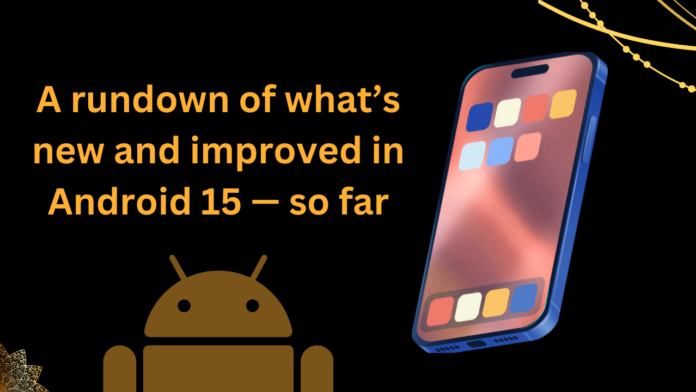Annual refreshes of Android and iOS (iPhone’s operating system) are always worth looking out for, and in the wake of Google I/O 2024, we now have the second beta release of Android 15, so it’s a roundup of everything coming to the OS. Good opportunity of the year.
If you want to join the beta testing — bearing in mind that these betas will contain bugs and issues — go here to see if your device qualifies. Google Pixel owners can sign up, and the program also includes phones from select third-party manufacturers, including handsets from OnePlus and Nothing (though not yet Samsung).
Keep in mind that features will be added (and possibly removed) in the coming months as we move toward the full launch of Android 15, which would be around October if Google were to stick to Android 14’s schedule. Is. But for now, here’s what’s new and improved in Android 15 so far.
Better multitasking
Android 15 will improve the multitasking experience on tablets and large-screen displays by enabling you to permanently pin the taskbar to the screen for a desktop-like experience. What’s more, split-screen app combinations — such as Gmail and YouTube — can be saved to bring back later. These app pairs can also be pinned to the taskbar.
private space

Android 15 is adding a new secure location to your phone—a private space—so you can lock down your most sensitive apps and the data inside them. If you use a Samsung phone, there is already something called Secure Folder, but now it will be baked into Android for all users.
It works by creating a new section in the app drawer that will require additional authentication (such as a passcode or fingerprint) to access. You can install any app you like here, including Camera, Google Photos, and separate instances of Google Chrome, for photos, videos, and web browsing that you don’t want anyone else to see.
Forecast back
This oddly named feature means that when you use the universal back gesture (swipe in from the side of the screen) you see a quick preview of what you’re going back to. So, for example, you might see a website you just left or the home screen—the idea is that users know what they’re going back to before they complete the gesture.
Partial screen recording
New in Android 15 is the ability to record the entire screen instead of just a portion of it. It’s handy if you’re putting together a tutorial, troubleshooting a problem, or recording your screen for any other reason. It’s available in Android’s screen recorder tool, and developers can add it to their apps as well.
Volume sliders redesigned.

Perhaps not the most significant change, but one you’ll notice a lot: the panel that appears when you tap the three dots below the volume slider now takes up more of the screen, allowing you to adjust the volume for media. Gets easy, alarms, and calls. You can also access connected Bluetooth devices from the same screen as your phone.
Satellite messaging
It looks like Android phones may finally get satellite messaging, just like the iPhone. We say “likely” because while Android 15 will officially “enhance platform support for satellite connectivity” in terms of software features, that connectivity will also be built into the hardware and potentially include will include a satellite network partner.
Widget views

Of course, widgets are nothing new in Android, but usually, when you’re adding new ones to the home screen, you only see general examples of what the widgets look like. In Android 15, developers can add rich previews to widgets — so, for example, when you add a contact widget, you’ll be able to preview it using one of your real contacts. How does it feel doing?
Set custom vibration.
For those of you who always keep your phones on silent: Android apps have previously been able to set custom vibrations, but in Android 15, you’ll be able to set them yourself for specific notification channels. will go. So you might have one buzz for email and two for text, for example.
One-time password protection
You may have accounts you log into that are sent one-time passwords (OTPs) to prove that you are who you say you are. In Android 15, notifications with these OTPs won’t appear onscreen, reducing the risk of someone stealing your passwords by looking over your shoulder or somehow recording your screen.
Protection against theft

Google is adding several features to Android to prevent thieves. The theft-detecting lock, for example, will use AI to detect if your phone has been stolen at speed and then automatically turn on the lock screen. It will also trigger auto-lock if your phone is off the grid for a long time or has too many failed authentication attempts.


